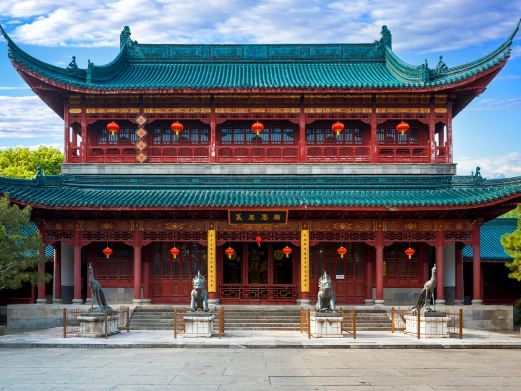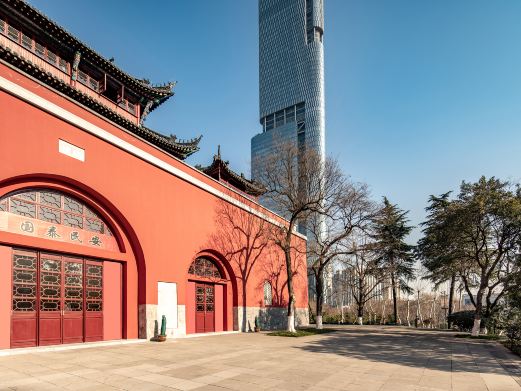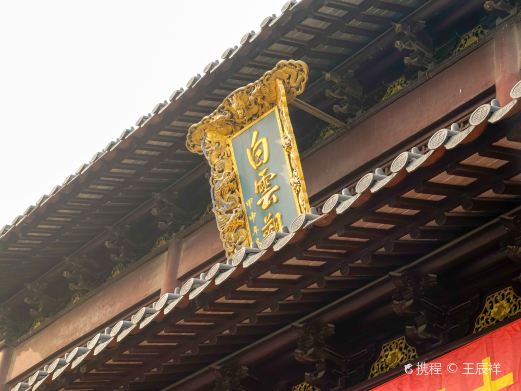The Wuliangdian is the only remaining Ming Dynasty building in Linggu Temple. It has a history of more than 600 years. Originally, the Wuliang Shoufo was enshrined in the hall, so it was once named Wuliangdian. Also, because the building is a brick and stone arch structure without using a single piece of wood, it is commonly known as Wuliangdian. It is precisely because it has no beams that it survived the war.
It is one of the five existing Wuliangdian in China with a long history and a large scale. The Wuliangdian is 50 meters long from east to west and 34 meters wide from north to south. The roof of the hall is a double-eaved nine-ridge, covered with gray-black tube tiles. There are three Lama towers erected on the main ridge. Inside the hall is a brick-vaulted dome with five rooms and three entrances. Each room has one arch. The three entrances on the side are each a longitudinal large tube arch. The middle arch is large, 11.4 meters wide and 14 meters high. The front and rear arches are smaller, 4.88 meters wide and 7 meters high. The brick stacks at the upper ends of the inner walls of the east and west mountain walls are stacked inward layer by layer and protrude up to more than 1 meter. It is about to fall but does not fall, which is amazing. In 1933, the national government built a cemetery for fallen soldiers on the former site of Linggu Temple, and the Wuliangdian was rebuilt into a cemetery memorial hall. At present, the Wuliangdian has been turned into a wax figure museum of famous people in the 1911 Revolution, displaying wax figures of dozens of famous people before and after the 1911 Revolution. The specific business status of the opening hours is subject to the opening situation on that day.Wuliangdian
The Wuliangdian is the only remaining Ming Dynasty building in Linggu Temple. It has a history of mo[...]









